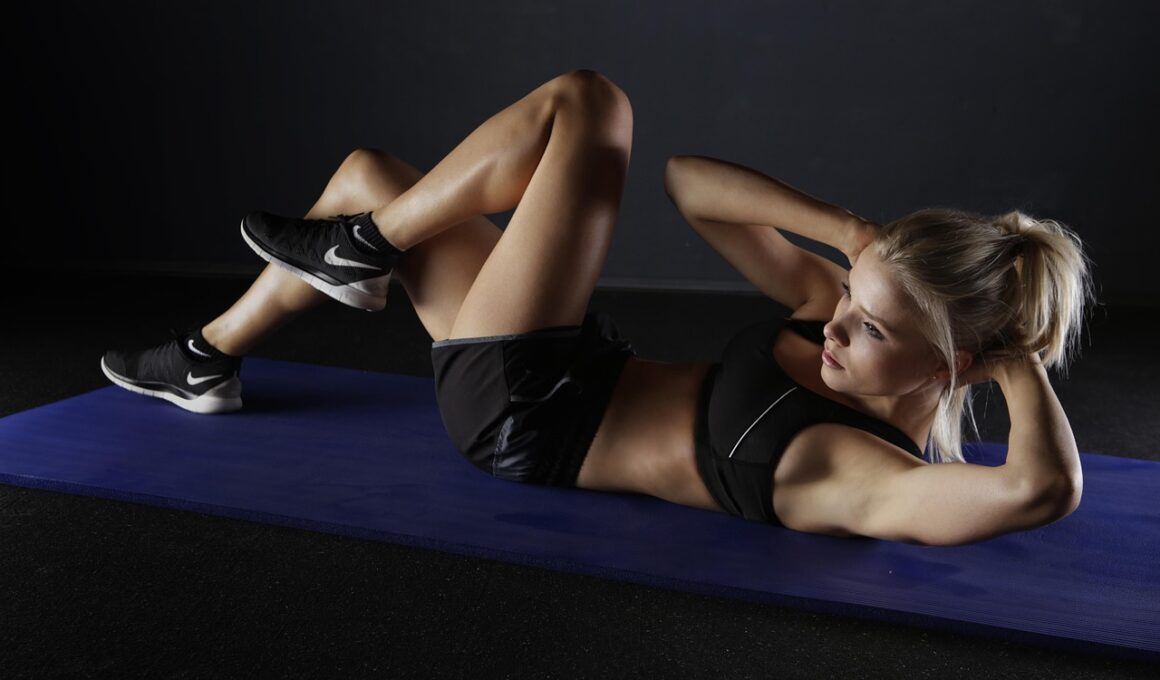Understanding Diastasis Recti and Its Impact on Postnatal Fitness
Diastasis recti is a common condition that affects many women during the postpartum period. It occurs when the rectus abdominis muscles, which are responsible for abdominal strength, separate due to the stretching of the linea alba. After giving birth, many women may notice a gap in the midline of their abdomen. Factors such as the size of the baby, multiple pregnancies, and previous abdominal surgeries can increase the risk of developing this condition. Knowing more about diastasis recti is important because it can influence both physical appearance and functional movement. Women with diastasis recti might experience back pain, poor posture, and challenges with core stability. Addressing this condition early can prevent long-term issues and encourage successful postnatal fitness routines. Personal trainers should be consulted for advice tailored to each individual. Often, physical therapists also provide valuable insights about rehabilitation exercises specifically designed for diastasis recti. Addressing diastasis recti can lead to more effective recovery, allowing mothers to regain their strength and perform daily activities comfortably.
Awareness of diastasis recti is crucial for all postpartum women, especially when engaging in exercise programs. Pelvic floor strength plays an integral role in overall fitness among new mothers. Ignoring the signs could lead to inappropriate workouts that further exacerbate the condition. Modifications can allow women to participate in fitness activities safely. Starting with low-impact exercises, such as yoga and pilates, helps in regaining core strength without undue stress. Always engage in a proper warm-up to prepare the body for physical activity. Consult physical therapists for assessment and to develop a structured exercise plan tailored to personal needs and goals. Specific exercises that promote deeper abdominal engagement should be prioritized. For instance, exercises like pelvic tilts, bridges, and modified crunches are advantageous. Adopting proper breathing techniques during workouts enhances core stabilization. Ensuring correct form prevents further injury and promotes wellness. Alongside proper exercises, a balanced diet fosters a healthy recovery process. Incorporating nutrient-rich foods supports muscle repair and overall health. Combining physical activity with sound nutrition will optimize postnatal fitness while effectively tackling diastasis recti.
Importance of Seeking Professional Guidance
It cannot be stressed enough how essential it is for women to seek professional guidance when confronted with diastasis recti. Approaching a physical therapist trained in postpartum recovery can yield significant benefits. Therapists can not only diagnose the severity of the condition but also offer personalized exercise modifications and progressions suited for individual needs. Building a supportive network, including trainers who specialize in postnatal fitness, can also help guide the recovery process effectively. Many new mothers may feel overwhelmed by advice from various sources, which can lead them to employ techniques that might worsen diastasis recti. Therefore, having a clear plan developed by a qualified professional can alleviate confusion. This tailored approach ensures the safety of exercising and aids in faster recovery. Women should also be aware of any signs of discomfort or pain. Listening to one’s body is essential in this healing process. Being educated on diastasis recti and obtaining appropriate assistance encourages a holistic approach towards fitness and health. This mindset facilitates an empowered transition to regular exercise as they reclaim their strength and physical capabilities.
Postnatal fitness comprises more than just re-establishing physical strength; it is also about mental well-being. Women’s mental health can be affected during the postpartum period, often due to changes in body image or physical inability to perform certain tasks. Addressing body confidence issues is crucial for overall recovery. Incorporating mindfulness and self-compassion into fitness routines fosters positive mental health vibes. Setting realistic goals helps in maintaining motivation and sustains engagement in postnatal exercises. Group fitness classes specifically tailored for postpartum women provide both support and motivation. These environments foster camaraderie and can alleviate feelings of isolation that can arise in early motherhood. Engaging in social interactions and shared experiences strengthens community bonds, which are vital for mental health. Using online platforms can also be beneficial for those who prefer exercising at home. Finding a supportive online course can lead to beneficial learning about fitness, nutrition, and other elements of recovery. The combination of physical activity and emotional support is a winning strategy in nurturing mental wellness while tackling diastasis recti. Before long, women will feel empowered to embark on their fitness journeys.
Creating a Postnatal Fitness Routine
When establishing a postnatal fitness routine, it is vital to create a balanced approach that addresses both strength and endurance. After assessing diastasis recti, women should commit to a progressive regimen that gradually increases in intensity. Start with short, low-impact workouts that promote core engagement and pelvic floor stability. Gradually add strength training and cardiovascular activities to help regain muscle tone and overall fitness. A useful template might include three weekly sessions focused on core exercises, such as bridges and planks, alongside two sessions dedicated to gentle aerobic movement like walking or cycling. The key is consistency without pushing the body too hard too early. Allow for ample rest and recovery, as these are crucial elements of a successful fitness routine. Scheduling regular check-ins with health professionals ensures that the routine remains safe and effective. Moreover, tracking progress, whether through journaling or apps, assists in maintaining accountability. Incorporating variety into workouts keeps them enjoyable, allowing women to stay engaged. A supportive fitness community can enhance experiences while offering motivation throughout this transformative journey.
Hydration and nutrition play critical roles in postnatal fitness success. Many women can forget to prioritize these aspects amidst the whirlwind of caring for a newborn. Drinking adequate water supports overall bodily function, helping with physical recovery and energy levels. In tandem, a balanced diet filled with lean proteins, fruits, vegetables, and whole grains fuels workouts and aids muscle recovery after exercises. Watching portion sizes while listening to the body’s hunger cues is important for weight management during this period. Women should be encouraged to indulge in healthy snacks rich in nutrients to keep energy levels high throughout the day. Emphasizing a diet high in fiber is also advantageous, as it helps promote digestive health. Avoiding processed foods and sugary snacks can mitigate energy crashes, supporting sustained physical activity levels. If needed, consult with a nutritionist who specializes in postpartum health. They can provide further tailored assistance regarding dietary requirements during the recovery phase. Prioritizing nutrition alongside an effective exercise program is crucial for achieving optimal postnatal fitness levels while embracing and managing diastasis recti.
Overcoming Challenges in Postnatal Fitness
Throughout the journey of postnatal fitness, women may face several challenges that hinder their progress. It’s essential to acknowledge these hurdles and work on strategies to overcome them. Time constraints often pose significant barriers; balancing childcare with personal fitness can be daunting. Setting aside dedicated time slots, even if short, for exercise can bring substantial results. Many mothers find early morning workouts before the household awakens to be perfect moments for self-care. A lack of energy can also dampen motivation. Incorporating brief sessions of movement throughout the day rather than lengthy workouts contributes benefits without overwhelming exhaustion. Family support is vital in navigating these challenges; encouraging partners to participate in activities or watch the baby can facilitate fitness opportunities. Therefore, creating a family routine surrounding physical activity builds emotional support for postnatal journeys. Moreover, celebrating small successes—whether achieving a particular strength goal or just sticking to a routine—fuels motivation. Women should be reminded that recovery is a process and that every step is progress. The focus remains on improving health and well-being during this transformative phase of life.
Lastly, staying informed about diastasis recti and postnatal fitness ultimately leads to richer experiences. Awareness of available support, resources, and exercises ensures that women can navigate their journeys effectively. Online forums, workshops, and wellness blogs also give mothers access to community experience shared openly. Engaging in discussions with other moms fosters deeper connections surrounding health practices, encouraging everyone to learn together. Establishing postnatal fitness goals with consideration for diastasis recti demands both time and dedication, yet the results prove rewarding. Using social media platforms can connect women with specialists who promote holistic recovery. Emphasizing a collaborative approach among mothers reinforces a positive mindset as they share victories and challenges. Maternal fitness journeys should underscore celebrating progress, even if small. Everyone enjoys support and acknowledgment in their path towards recovery and self-care. Ultimately, each woman’s journey is distinct, and embracing one’s own narrative brings empowerment and encouragement. Continuously striving for a balanced approach through exercise, nutrition, and community contributes significantly to the overall postnatal experience. As women reclaim their bodies and strength, they inspire others to embark on similar journeys.


